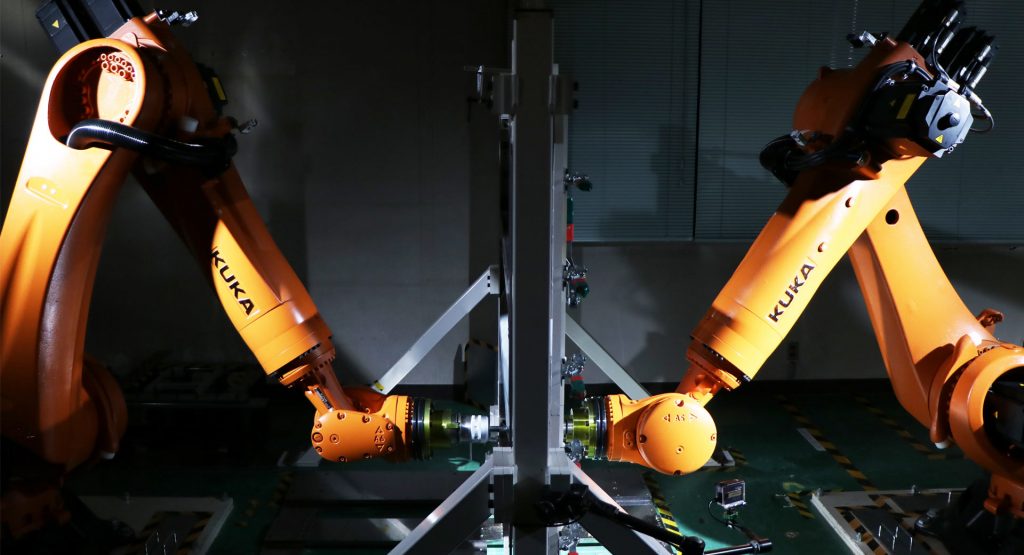A number of classic automobiles have a lot of support from aftermarket companies, but that’s not always the case. This can make finding replacement parts for rare or less popular models a daunting, if not impossible, task.
Nissan understands this so they’ve developed a proprietary technique known as dual-sided dieless forming. The company says it’s flexible and offers short lead times as well as minimal upfront costs. This means it could be “commercially viable to produce and sell a wide variety of after-service and replacement parts in small volumes for cars that Nissan no longer makes.”
Dual-sided dieless forming sounds complicated, but the technique uses two synchronized robots, on either side of a steel sheet, that gradually shape the metal using diamond-coated tools.
Also Read: Nissan Launches Nismo Heritage Offering Spare Parts To Firm’s Icons
While that’s pretty straight forward, the real difficulty is programming the robots to operate in sync. Nissan says they were able to solve this problem by developing advanced programs which are capable of controlling both robots with a “high degree of dimensional accuracy, enabling the formation of detailed convex and concave shapes.”
The company didn’t go into too much detail, but they noted existing techniques have primarily relied on single-sided forming which limits the complexity of shapes that can be created. The company also said the use of mirrored diamond cutting tools reduces friction and this eliminates the need for lubrication. This has a number of benefits including lower costs, improved surface quality consistency and less of an environmental impact.
There’s no word on when Nissan could be begin offering parts built using dual-sided dieless forming, but the company has been upping their commitment to classic cars in the past few years. Most notably, the company launched Nismo Heritage Parts which offers an assortment of components for the R32, R33 and R34 GT-R.






















































